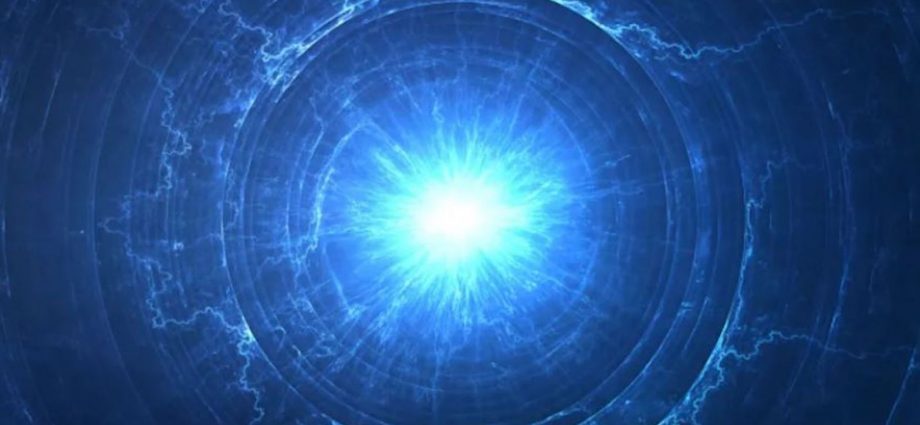China has simulated using nuclear weapons to destroy near-earth orbit satellites, a capability that could knock out multiple enemy satellite constellations used to support military operations.
The Northwest Institute of Nuclear Technology, a Xian-based research institute run by the People’s Liberation Army, claims to have developed a model to evaluate the performance of nuclear anti-satellite weapons at different altitudes and yields with unprecedented detail and accuracy, according to news reports.
The research team’s simulation showed that a 10-megaton warhead could destroy satellites if it detonates at an altitude of 80 kilometers, with the blast turning air molecules into a pear-shaped cloud of radioactive particles that can cause failures and damage to satellites, nuclear physicist Liu Li and his team wrote in a paper published in the Nuclear Techniques peer-reviewed journal.
Liu’s team noted that a space-based nuclear explosion would be ineffective as the lack of air would not generate a large radioactive cloud. Furthermore, the Earth’s atmosphere would capture most of the high-energy particles created by the blast and spread it around the globe as a radiation belt, threatening a wide range of spacecraft.
This drawback makes space-based anti-satellite nuclear weapons broadly ineffective and dangerous.
In contrast, Liu says an atmospheric nuclear blast in near space can create a cloud with a far greater mass than the nuclear device itself. In addition, high concentrations of radioactive particles in the debris cloud amplify the effects on spacecraft and communications.
The simulation showed that immediately after the blast, the radioactive cloud would rise at 2-3 kilometers per second, setting a huge trap for satellites. However, unlike a space blast, most of the air molecules would fall to Earth instead of remaining in orbit, avoiding the radiation belt effect and significantly reducing the risk to other satellites and spacecraft.
Asia Times has previously reported that Chinese state researchers have called for developing anti-satellite capabilities against the US Starlink satellite constellation, citing the system’s potential military applications as a threat to China’s national security.
In an article in the Chinese peer-reviewed journal Modern Defense, a team of senior scientists in China’s defense industry stated that “a combination of soft and hard kill methods should be adopted to make some Starlink satellites lose their functions and destroy the constellation’s operating system.”

China has undoubtedly observed Starlink’s crucial role in the Ukraine war and evaluated the constellation’s potential role in a Taiwan-related contingency. Starlink has enabled Ukrainian forces to inflict heavy losses, and military reverses, with its satellites helping coordinate drone and artillery attacks against Russian troops.
In particular, Starlink was supposedly instrumental in the sinking of Russia’s Moskva cruiser this April, providing targeting data for Ukrainian Neptune coastal anti-ship missile batteries.
Conventional anti-satellite weapons such as ground-based jammers, missiles, satellite-mounted energy weapons and hunter-killer satellites may effectively destroy a limited number of satellites. But these weapons may be ineffective against a vast constellation such as Starlink, which has some 2,300 satellites in orbit.
A controlled nuclear explosion in near space may fill China’s requirement for a cost-effective, anti-satellite weapon that can destroy multiple satellites in one attack.
The idea of using nuclear weapons for anti-satellite missions is not new. US anxiety about Soviet orbital nuclear weapons led the Kennedy administration to approve a land-based nuclear anti-satellite program known as Project 437.
However, US scientists noted that high-altitude nuclear explosions are indiscriminate and could destroy all satellites within line of sight, including US satellites. Moreover, many more satellites in low earth orbit could be destroyed by radioactive fallout.
However, China’s recent simulations may have demonstrated the feasibility of overcoming the technical difficulties associated with using nuclear weapons for anti-satellite missions.
China could also use nuclear weapons in an electromagnetic pulse (EMP) attack, disabling satellites, warships and power grids.
In 2020, US EMP Task Force on Homeland Security released a report on China’s EMP warfare capabilities that estimated Beijing views nuclear EMP as the most potent and effective electronic warfare weapon, including so-called high-altitude EMP (HEMP) propagating through the atmosphere.
The US Homeland Security report notes that the US is potentially more vulnerable than any other country to an EMP attack, noting its extreme reliance on satellites, computers and electronics.
Finally, it discusses the offensive role EMP weapons play in China’s military doctrines against the US and mentions that China could use a low-yield nuclear device to generate a HEMP pulse.

Daniel Beck, in a 2021 monograph from the US Army Command and General Staff College, notes that China may deploy tactical nuclear weapons to generate a HEMP, with the radiation from a device detonated 70 to 100 kilometers above the Earth’s surface devastating enemy digital systems.
Beck also mentions that such an attack is the only feasible option that meets the criteria for a paralyzing first strike against Taiwan. The US EMP Task Force report notes that China has the technical capabilities to mount nuclear EMP devices on satellites and hypersonic weapons.
It states that China has the technical capability to mount nuclear EMP devices on satellites, with the weapons clandestinely in orbit until activated for a surprise attack. However, the report states that if China has already deployed such weapons in space it would be one of its most deeply guarded state secrets, as it could induce the US and other nuclear states to put nuclear weapons in orbit.
The Homeland Security report also says that China could opt to equip nuclear EMP devices on its hypersonic weapons, as their operating altitude of 40 to 100 kilometers is ideal for a HEMP attack on a carrier battlegroup or even intercontinental ballistic missile system (ICBM) storage sites.
In using tactical nuclear weapons on hypersonic weapons to deliver EMP strikes, the US EMP Task Force says that China can transform its small nuclear arsenal into a “giant killer,” capable of evading US missile defenses to unleash an EMP “Pearl Harbor” attack.

